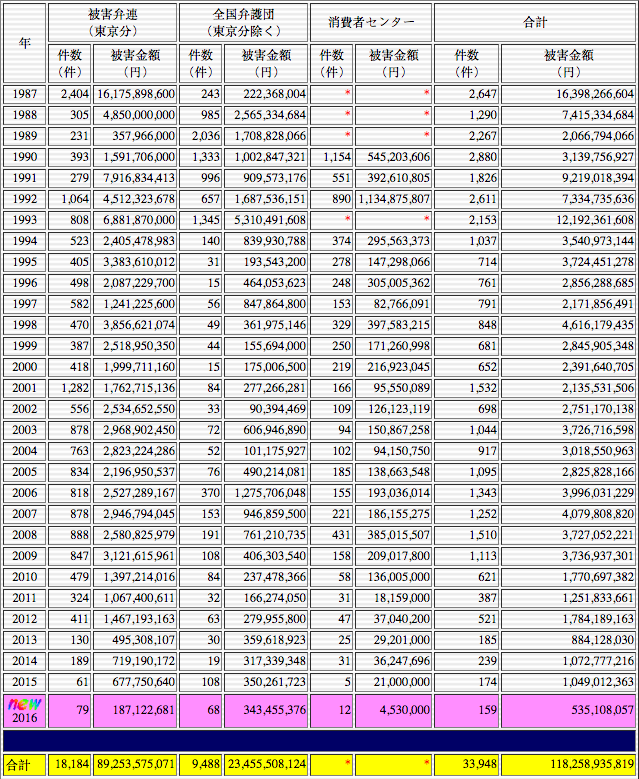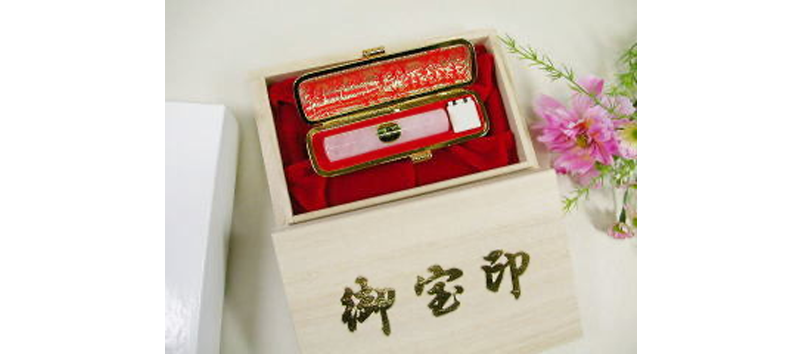A top Japanese Unification Church leader who left, Yoshikazu Soejima, was interviewed by The Washington Post in 1984
Moon’s Japanese Profits Bolster Efforts in U.S.

▲ Ronald Reagan holding a copy of the (UC owned) News World paper.
By John Burgess and Michael Isikoff – Washington Post Staff Writers
September 16, 1984
http://www.washingtonpost.com/wp-srv/national/longterm/cult/unification/profit.htm
The Japanese branch of the Rev. Sun Myung Moon’s Unification Church has transferred at least $800 million over the past nine years into the United States to finance the church’s political activities and business operations, including The Washington Times newspaper, according to two former high-ranking church officials.
This money is generated in Japan, primarily through a Tokyo-based business operation that uses church members to sell marble vases, miniature treasure pagodas and other religious icons that are represented as having supernatural powers, the former officials said.
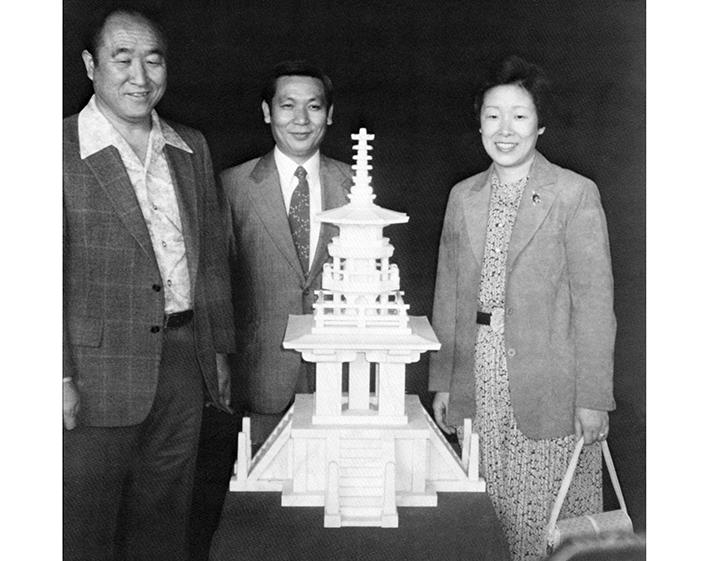
▲ Sun Myung Moon and Hak Ja Han with a pagoda made by a Korean church business, Il Shin Stoneworks. These were sold in Japan for $50,000 or more. (Link to SCAM)
The sale of these items has been the principal source of capital for an international network of Unification Church operations, said the former officials, Yoshikazu Soejima and Hiroaki Inoue.
These operations range from Gloucester, Mass., tuna fleets to the anticommunist political lobbying of CAUSA International in Latin America and the United States.
Their accounts could explain how the Unification Church – with fewer than 5,000 U.S. members by some estimates – has been able to support a major Washington newspaper that has lost an estimated $150 million during its first 2 1/2 years of operations.
The Times, showcase of the church’s business network, is seen by Moon as an important source of political influence here, according to Soejima, the former chief of Unification Church public relations in Japan. Exhorted by pep talks to meet “the respected father’s” needs, Japanese church members have worked in recent years under sales quotas requiring them to transfer to the United States roughly $2.5 million a month earmarked for The Times, Soejima said.
“The Washington Times was the top priority of the entire Unification Church worldwide,” said Soejima, who was editor of Sekai Nippo (World Daily News), a church-controlled Tokyo newspaper, before being fired last October following a dispute with church officials over control of the paper.
Soejima and Inoue said the religious icons were distributed by Happy World Inc., an importing firm based in Tokyo that they said is church-controlled. But a senior Unification Church official denied in an interview last week that the church had any relationship with Happy World.
“Our view is that the Unification Church has nothing to do with sales activities,” said Hiroshi Sakazume, the Japanese church’s director general of public relations. “We don’t know what each church member is doing. But as a church, we don’t do any sales . . . . Happy World is a different company, a totally separate organization.”
Sakazume said, however, that the Japanese church is transferring money overseas. In church theology, he said, it is Japan’s duty to play the mystical role of Eve, giving succor to the church’s children in other countries.
“I cannot say exactly what the amount of money is, but I can tell you that we are doing it legally,” he said.
Soejima, 37, is the highest-level church official to break with Moon and publicly discuss the church’s operations. In five lengthy interviews with The Washington Post in Tokyo, he provided details about church finances that were supported by hand-written notes he said he had made after monthly meetings of top church financial officials in 1981 and 1982.
His statements also were supported by Inoue, who headed church operations on Shikoku Island before being fired by the church and who sat in on four of the interviews with Soejima.
Soejima and Inoue now publish a small Tokyo newspaper that has printed several articles critical of the Unification Church.
Soejima said he joined the Unification Church as an idealistic university student nearly 20 years ago and that he continues to believe in its public objectives of uniting world Christianity and eradicating communism.
But, he charged, Moon had betrayed his followers and distorted the church’s lofty goals by turning his movement into a huge money-making machine.
“By the end of 1975, the main activity of the church was collecting money, buying lots of real estate in Korea and the United States and starting a lot of businesses,” Soejima said. Moon “is not working for the world, but for himself,” he said.
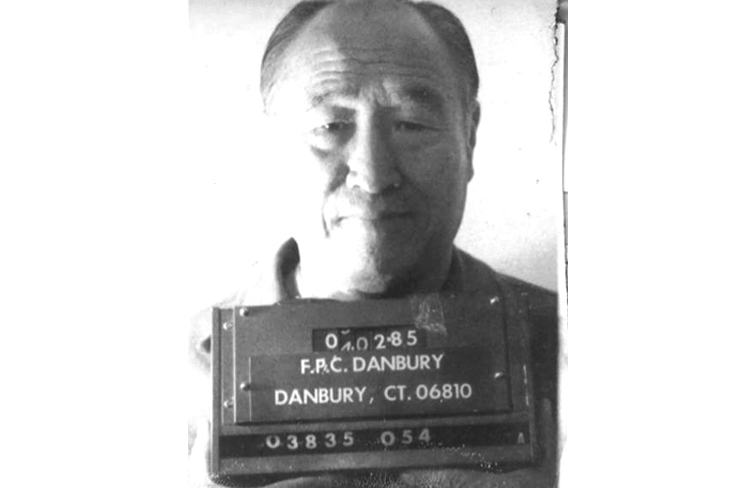
▲ Sun Myung Moon in Danbury prison
Moon, who is serving an 18-month sentence for income tax fraud [and document forgery] in federal prison in Danbury, Conn., declined a written request to be interviewed for this story. The 64-year-old evangelist, who said in July that he was moving the worldwide Unification Church headquarters to his prison cell, works in the facility’s kitchen and has been receiving a stream of visitors from around the world, according to church officials and others who have visited him there.
Founded by Moon in South Korea in 1954, the Unification Church has grown into a multinational conglomerate of business, political and cultural organizations. Causa International, a church-financed political group headed by Moon deputy Bo Hi Pak, has spent millions of dollars in recent years on anticommunist lobbying in Latin America and the United States.
The diversity of church businesses is enormous: the church has invested more than $60 million in Uruguay in recent years, buying the country’s largest luxury hotel, its fourth-largest bank, a publishing company and large tracts of farm land.
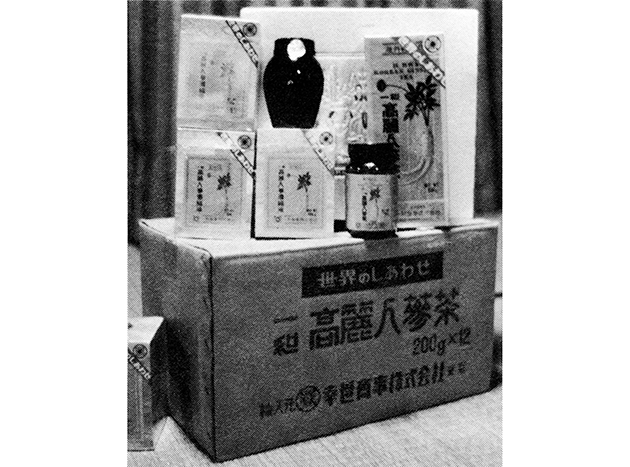
▲ Ginseng tea is manufactured by a church company, Il-Hwa. Ginseng has NOT been proven have any significant health benefits. For Sun Myung Moon it generated $millions, much of that from Japan.
It owns four South Korean manufacturing companies, including a ginseng tea company, a titanium firm and a machine-tool and weapons manufacturer, that had estimated total assets of $198 million last year, according to figures published in the Maeil Economic Daily newspaper in Seoul. It also operates tuna fleets and fish-processing plants in Gloucester, Mass., Norfolk and Alaska and owns newspapers in Montevideo, Cyprus, Tokyo, New York and Washington.
In the Washington area alone, besides The Times, the church owns a downtown construction firm, Monumental Construction and Moulding Co.; an Alexandria television production firm, Tele-Color Studio, and a number of McLean-based companies, including Unification Church International (UCI), which was incorporated in 1977 by Bo Hi Pak, and has been described by federal investigators as the ultimate church holding company in the United States.
UCI owns One Up Enterprises, which in turn owns News World Communications, which in turn owns The Washington Times, according to interviews with former church members and corporate records on file in the District and in Fairfax.
Another McLean-based UCI subsidiary, U.S. Foods Corp., collects $497,310 a year from the D.C. government for office space it rents to the Department of Human Services and other city agencies at 605 G St. NW, according to city records.
The source and scope of the church’s investments in this country have long puzzled outsiders, including congressional and federal investigators. Soejima and some former church members in the United States said they believe most American church businesses, such as the tuna fleets and fish-processing plants, are run by inexperienced managers and lose money or, at best, break even. “They lose their shirt constantly,” said Jeremiah S. Gutman, a New York lawyer who represents the Unification Church in this country.
The church’s ability to finance these ventures has been especially puzzling in light of the relatively small number of church members here.
The church claims 2 million to 3 million followers around the world, including 300,000 in Japan and 30,000 to 40,000 in the United States, of which about 8,000 are described as full-time members. Three former U.S. church members interviewed recently and researchers who study the church have said that these numbers are highly exaggerated and that the church has been losing membership rapidly, especially in the United States, where recruitment is believed to have slowed to a trickle several years ago.
Soejima estimated the number of Japanese members at 8,000 and quotes Moon as saying in 1982 that he was disappointed because there were only 2,000 members in the United States – a number that is slightly lower than the estimates of about 3,000 members supplied by former church members and a figure of 5,000 cited by Gutman.
A House subcommittee, which investigated ties between the church and the Korean Central Intelligence Agency, concluded in a 1978 report that the church’s funds came from domestic businesses, church fund-raising and “funds from outside the United States, the ultimate source of which was undetermined.”
Based on their former access to internal church documents and Soejima’s attendance at numerous top-level meetings of church financial officials, Soejima and Inoue said their conservative estimate is that the church has transferred at least $800 million to the United States in the past nine years. Starting in 1975, they said, the church mobilized its Japanese members for a massive fund-raising effort that has used high-pressure sales techniques to take advantage of the religious superstitions of Japanese consumers.
Handwritten notes that Soejima made at some church finance meetings indicate that the Japanese church was taking in more than $100 million a year during 1981 and 1982, most of which was transferred to church headquarters in New York.
One set of notes, based on a church financial report from June 10 to Sept. 10, 1981, states that the Japanese church raised about $54 million during the three-month period (based on 1981 exchange rates), of which about $38 million was sent “out” – a term that Soejima said meant abroad. That figure was representative of the year’s other three quarters, he said.
Soejima said that sales revenues tailed off the following year but were substantial. His notes say that from January through August 1982, the church earned monthly profits of between $6.8 million and $14.2 million for a total of $81.4 million. He said similar amounts were earned during the last four months of the year. That would mean the church earned about $122 million in 1982, of which 90 percent was shipped abroad, according to Soejima.
He said these transactions were usually made through international bank transfers, but large amounts of cash were carried into the United States by church members because “sometimes Moon wants money right away. Getting permission to send it by bank transfer takes time,” Soejima said.
When Moon conducted a “mass wedding” of 2,075 couples in Madison Square Garden in 1982, 400 Japanese men and women were flown over for the event. “Each person took, I think, about $2,000,” Soejima said.
According to Soejima, a confidential financial statement would be distributed to 10 to 12 top Japanese church officials each month. These statements would show roughly $2.5 million earmarked for The Washington Times.
Each month figures on actual spending would show the previous month’s target had been met. Senior officials would then deliver pep talks on “the respected father’s” needs for a better showing next time, he said.
“Always, it ended with a statement that this is where we stand now, so go out and fight harder,” Soejima said.
According to his account, the ability of the church to generate these funds is based on its control of Happy World Inc., a company that is headquartered in a utilitarian fifth-floor office in a Tokyo business district and whose president, Motoo Furuta, is chief of the Japanese church’s financial bureau, according to Soejima. Church spokesman Sakazume said Furuta is not a church official.
In a recent interview, executive manager Sanji Nakada described Happy World as a diversified company that, among other activities, distributes computer equipment and runs a canning factory on Hokkaido Island and a health-drink factory near Tokyo. Nakada said Happy World is not a church organization but that some employees may be church members.
Happy World’s main activity is importing of consumer goods, such as marble vases, miniature treasure pagodas and ginseng teas from church-owned companies in South Korea, including Il Shin Stoneworks, Tong Il Co. Ltd. and Il Hwa Co. Ltd., according to Nakada and the company’s sales brochures.
The vases, pagodas, ginseng and other consumer items are distributed to about 10 wholesale and retail outlets throughout Japan that, according to Soejima and Inoue, are controlled by the church and use church members as door-to-door salesmen.

▲ Marble vases and other items manufactured in Korea by Il Shin Stoneworks and sold in Japan by the Unification Church for very high prices. A statue of Buddha can be seen top right.
More than 2,600 complaints about the sale of marble vases, ivory seals and miniature pagodas of the kind that are often sold by church members were lodged with the Japan Consumer Information Center between 1976 and 1982, according to a report made by the government-funded agency.
Hundreds of these complaints involved reported cases of intimidation, threats or misrepresentations in which salesmen preyed on the “religious anxieties” of consumers, according to the center’s report. The small objects often were portrayed as having mystical powers that could save unhappy marriages, cure illnesses or purge the evil spirits of samurai ancestors, the report said.
[By 2020, as ordered by courts all over Japan, more than $1billion had been paid out in compensation to victims of Unification Church scams. This chart only covers 1987-2016]
The center has published pamphlets to warn consumers about the sales of these items. In one case cited in a center pamphlet, a woman whose husband had just died in an auto accident was being sold one of the objects. The salesman told her the evil spirit of a samurai ancestor who had killed with his sword was tormenting the family. The sale would solve that. “If you don’t buy it, the same evil spirit will continue with your children and they will meet the same fate,” the salesmen said, according to the pamphlet.
Consumer Center officials cannot directly link such incidents with the church’s operations here. The salesmen, Soejima and Inoue said, are instructed never to identify themselves as being with the Unification Church or Happy World.
“We had orders that, when engaging in economic activity, never say you are a member of the church,” Inoue said.
Nevertheless, Consumer Center officials say they have sometimes been contacted by low-level distribution companies – which Soejima says are church fronts – and told to refer consumer complaints about the items to them. “We can presume that behind the scenes these sales groups have a systematic link,” according to the Consumer Center report.
According to Soejima and others, the profits from sales of these items can be enormous. In an extreme case, he said, a vase that cost about $21 was sold for $8,300. A quantity of ginseng worth about $42 sold for eight times that amount. One salesmen can raise about $4,000 per month, he said.
The salesmen’s expenses are minimal. During his years in the church, Soejima said, he often visited church members at grimy group houses where they slept half a dozen to a room. The members receive no salary from the church and immediately hand over all their sales proceeds to the house “leader.” Once a month, Soejima said, a church official comes to the house and “they collect it in cash and bring it to Tokyo.”
In a two-hour interview in Tokyo, four former church members told of being assigned to sales soon after joining. Church officials conducted sales-training lectures using films and stressed the need for money to finance “the restoration” under way in the United States.
All four members, who asked not to be identified, said they were told of Happy World’s role soon after joining. “I was told it was the economic department of the Unification Church,” said a 24-year-old woman who had sold ivory seals door-to-door.
The primary role of The Washington Times within Moon’s global organization was underscored in ways other than the financial support it received from Japan, Soejima said. He cited a series of meetings in February 1983 that began at church headquarters at the New Yorker Hotel, where about 70 church officials from round the world gathered to celebrate Moon’s birthday.
With Moon and his family standing before them in ceremonial Korean dress, selected church officials played different religious and political leaders, such as Christ, Mohammed, Buddha, President Reagan and Japanese Emperor Hirohito. Each one prostrated himself before Moon, bowing his forehead to the floor three times, Soejima said.
“The meaning is that Moon is higher than all of them,” Soejima said. In church theology, “Sun Myung Moon is the father and his wife is the mother of the whole human race.”
The next day, with the church officials assembled at Moon’s estate in Tarrytown, N.Y., Moon expressed disappointment with his inability to win more converts in the United States.
But he spoke with pride of The Washington Times, bragging of important officials who had attended its opening ceremonies. Moon said that James Whelan, then publisher of The Washington Times, “listens to what I say and makes the newspaper as I tell him,” according to Soejima.
Soejima added that Bo Hi Pak, Moon’s top deputy and chairman of News World, may not have been telling Moon the full story of Whelan’s role at the newspaper. But Soejima also said that at the same meeting, Pak remarked that there was a problem at The Times because church members were being assigned to unimportant jobs in the library and files.
According to Soejima, Moon responded: “It’s not a difficult problem. If each one of the church members does missionary work and converts three reporters, then we can have unity.”
At a later meeting in June 1983 on Korea’s Cheju Island, Moon told a church group that four things were necessary for world consolidation: ideology, economy, science and technology, and journalism.
“With journalism, we have now reached success by establishing The Washington Times,” Moon said, according to Soejima. “We now have a direct influence on Reagan through The Washington Times.”
By Soejima’s account, his break with the church followed a dispute over editorial independence. As editor of Sekai Nippo, Soejima said, he was attempting to transform the paper from a church organ into a respected journal with general appeal. At the end of last September, however, he said, he began to hear rumors that Moon had ordered his firing.
On the first of October, about 100 people – including about 30 in special karate training groups – barged into the paper’s office. They were led by members of Shokyo Rengo, an anticommunist political group affiliated with the church, Soejima said. They broke into desks, stole papers and beat up some of the employees, he said. Soejima, Inoue and a policeman that Soejima had previously summoned took shelter in an office when they arrived. “The church members kicked in the door but stopped when they saw a policeman inside,” he said.
Sekai Nippo vice president Naohiro Nada said the church fired Soejima because he was trying to seize full control of the newspaper and make himself president. Soejima filed papers at the company registry to accomplish this, Nada said. Soejima says he did so to protect his position after learning Moon planned to fire him.
On June 2, 1984, Soejima was attacked outside his home in Tokyo and stabbed repeatedly, according to police reports. When the attack occurred, he was preparing an article [This is the hidden part of the ‘Unification Church’ = これが『統一教会』の秘部だ] critical of Moon that was later published in the Japanese magazine Bungei Shunju, he said. SEE link below.
During an interview, Soejima unbuttoned his shirt to show scars on his left bicep, neck and chest, which he says he got in the attack. No one has been arrested in the case.
Shigehiko Togo of the Washington Post Tokyo Bureau and special correspondent Martin Anderson in Montevideo, Uruguay, contributed to this report.
「これが『統一教会』の秘部だ」
世界日報事件で『追放』された側の告発
“This is the hidden part of the ‘Unification Church’
– Accusation by the side ‘thrown out’ in the Sekai Nippo ‘World Daily News’ incident”
『文藝春秋』 1984年7月号 Bungei Shunjū magazine July 1984
by
副島嘉和 Soejima Yoshikazu (編集局長 editor and publisher)
そえじま よしかず
(「インフォメーション」編集発行人)
and
井上博明 Inoue Hiroaki (営業局長 sales manager)
いのうえ ひろあき
(「インフォメーション」営業担当)
These are the sections of the article:
暴カをふるって占拠
The violent occupation [of a place]
なぜ訣別したのか
Why did I leave?
「愛のマグロ釣り研修」とは
What is the “Love Tuna Fishing Training”?
日本語版から削除された個所
Items removed from the Japanese version [of Divine Principle]
敬礼式の奇怪な儀式
A bizarre bowing ceremony
金集めに狂奔
A craze over collecting money
「ハッピ一ワ一ルド」社とは?
What is the “Happy World” company?
脱税の手ロ
The method of tax evasion
セ一ルスマン用の手引書
Handbook for salespeople
米国における脱税裁判
The United States tax evasion trial
This story reveals Japanese recruitment techniques:
My sister was sold by the FFWPU to a Korean farmer
A huge FFWPU / UC financial scam in Japan is revealed
Shocking video of UC of Japan demanding money
Judge in Japan: “FFWPU used members for profit, not religious purposes”
Moon’s activities in South America, giving background to this story
The Atsuko Kumon Hong “suicide / murder” of August 2013
Illegal, church-organized high-pressure sales scheme
6,500 women missing from FFWPU mass weddings
How Moon bought protection in Japan
“Apology marriages” made by Japanese UC members to Korean men
“Reputations: Sun Myung Moon, The Emperor of the Universe” documentary transcript

